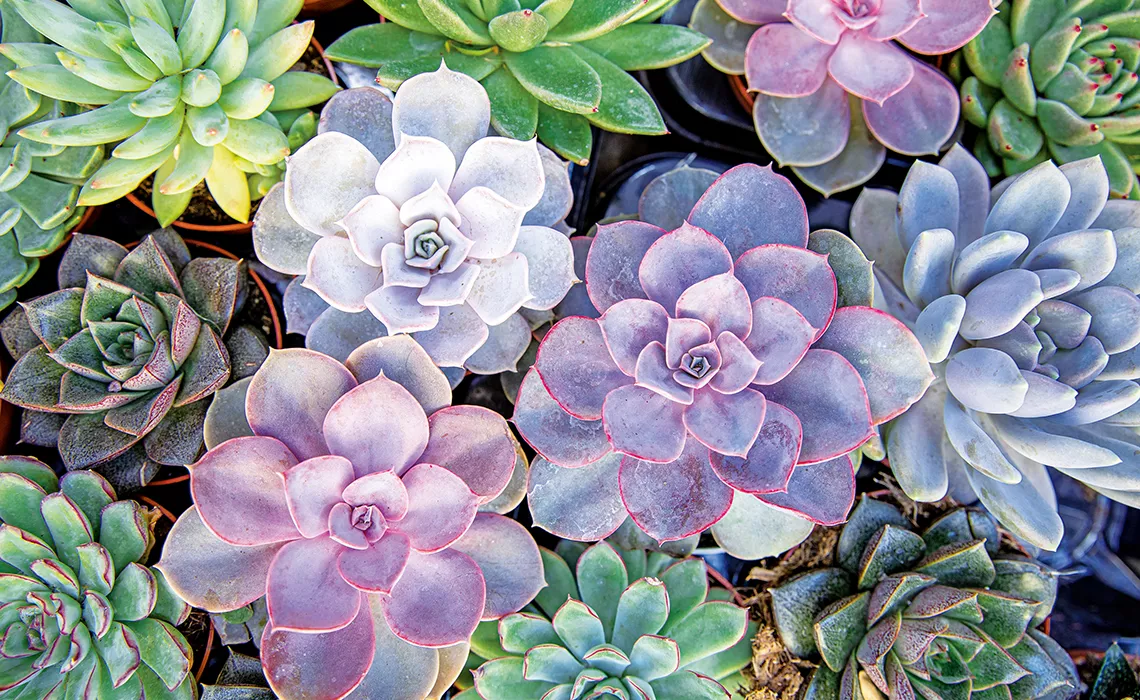Succulents have captured the hearts of gardeners and plant enthusiasts worldwide with their stunning, often otherworldly appearances and low-maintenance nature. These hardy plants, known for their water-storing leaves, are ideal for both indoor and outdoor environments. One common question that succulent growers often ask is, “How long does it take for succulents to grow?”
Understanding Succulent Growth Rates
Before diving into the specific timelines for succulent growth, it’s crucial to comprehend that the rate at which succulents grow can vary widely based on several factors. Some of the most significant determinants of growth speed include the succulent species, environmental conditions, and the care and attention provided. Therefore, while it’s impossible to provide a single answer to how long it takes for all succulents to grow, we can discuss the general timelines and provide insights into speeding up the process.
Succulent Germination
The first stage of succulent growth begins with germination, which occurs when a succulent seed or leaf cutting starts developing into a new plant. Germination times can vary significantly depending on the succulent species, but they typically range from a few days to several weeks. For instance, fast-growing succulents like Sedum and Echeveria may start showing signs of germination within a week or two, while slower-growing varieties such as some cacti may take several weeks or even months.
Factors Affecting Germination Time
Several factors can influence the germination time of succulents:
Temperature: Succulents, like many plants, require optimal temperature conditions for germination. Most succulents prefer temperatures between 70°F to 75°F (21°C to 24°C) to encourage germination.
Moisture: Maintaining the right level of moisture in the soil is essential. Succulent seeds and leaf cuttings should not be kept too wet, as this can lead to rot. It’s essential to provide consistent but not excessive moisture during germination.
Light: While succulent seeds generally don’t need direct sunlight during germination, they do require some form of indirect or filtered light to encourage the process.
Succulent Seedling Growth
After germination, succulent seedlings enter a phase of growth where they develop their first set of true leaves and start to resemble miniature versions of mature succulents. The duration of this phase can vary, but it often takes a few months for seedlings to reach this stage. However, some species may take longer, especially if they are slow growers.
Factors Influencing Seedling Growth
The following factors influence the growth rate of succulent seedlings:
Light: Adequate light is essential for healthy seedling growth. While succulent seedlings can tolerate less light than mature plants, they still need sufficient illumination to develop properly. A lack of light can result in leggy, weak seedlings.
Temperature: Maintaining a consistent temperature within the preferred range for each succulent species is vital for healthy seedling development. Cooler temperatures can slow down growth.
Soil: A well-draining soil mix designed for succulents will promote healthy root development and growth in seedlings. Soil that retains too much moisture can lead to root rot and hinder growth.
Succulent Juvenile and Mature Growth
As succulent seedlings continue to grow, they enter the juvenile phase, during which they develop more leaves and start to take on the characteristics of their mature counterparts. The timeline for transitioning from the juvenile phase to mature growth can vary widely. Some succulents may achieve maturity in a few months, while others can take several years.
Factors Affecting Juvenile and Mature Growth
Species: The growth rate of succulents is highly species-dependent. Some succulents, like Kalanchoe, grow relatively quickly and may reach maturity in a short time. Others, such as Agaves and some cacti, are known for their slow growth and can take years to mature.
Environmental Conditions: The care and conditions provided to your succulents play a significant role in their growth rate. Factors such as temperature, light, and water all influence how quickly or slowly succulents progress through their life stages.
Pruning and Maintenance: Pruning and other forms of maintenance can influence the shape and growth patterns of your succulents. Regularly removing dead or damaged leaves can redirect energy to new growth.
Strategies for Faster Succulent Growth
If you’re looking to speed up the growth of your succulents, there are some strategies you can employ:
Optimal Conditions: Ensure that your succulents are provided with the best possible growing conditions, including the right amount of light, suitable temperatures, and well-draining soil.
Fertilization: Using a balanced, diluted succulent fertilizer during the growing season can encourage faster growth. However, it’s essential not to over-fertilize, as this can lead to salt buildup and harm your plants.
Propagation: Propagating succulents from offsets or leaf cuttings can lead to faster growth, as the new plant inherits the age and development stage of the parent plant.
Proper Care: Regular care and attention, including removing dead or damaged leaves and providing adequate water and light, can help succulents grow at a healthy pace.
Conclusion
Succulent growth rates are as diverse as the succulent species themselves. While it’s impossible to provide a specific timeline for all succulents, understanding the factors that influence growth can help you create the ideal conditions for your plants. With patience, the right care, and a bit of knowledge, you can enjoy watching your succulents evolve from seeds or cuttings into beautiful, mature plants. Remember that, like all gardening endeavors, the journey of nurturing succulents can be as rewarding as the destination.


